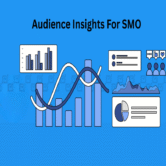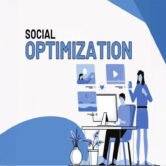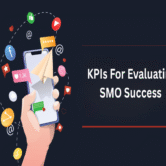
Introduction to the evolution of online advertising
Introduction
Online advertising has undergone a remarkable transformation since the early days of the internet. From static banner ads to dynamic programmatic campaigns powered by artificial intelligence, the journey reflects technological advancement and shifting consumer behavior. The evolution of online advertising has shaped how brands connect with audiences, allocate budgets, and measure success. As platforms diversified and user data became central to targeting, advertising turned from a broad-based exposure tool into a highly personalized engagement engine. Understanding this evolution provides key insights into how digital marketing continues to adapt in a rapidly changing online environment.
The banner ad era and early experimentation
The first banner ad appeared in 1994, marking the beginning of online advertising. These early ads were simple, static images with limited targeting capabilities. Advertisers focused primarily on impressions and click-throughs. While novelty drove initial engagement, users soon developed “banner blindness,” prompting the need for more effective formats. Despite its limitations, this era laid the foundation for web monetization and ad innovation.
Rise of search engine marketing and keyword targeting
The launch of Google AdWords (now Google Ads) in 2000 revolutionized online advertising with a keyword-targeted, pay-per-click model. Advertisers could now reach users based on specific search queries, making ads more relevant and cost-effective. This performance-based model allowed businesses of all sizes to compete on equal footing, transforming search engines into high-value advertising platforms and introducing metrics such as cost per click (CPC) and quality score.
Emergence of social media advertising
With the rise of social networks like Facebook, Twitter, LinkedIn, and later Instagram and TikTok, advertisers gained new platforms to engage users based on interests, demographics, and behavior. Social media advertising introduced native ad formats—ads that blended into the user feed—and emphasized engagement metrics like likes, shares, and comments. These platforms allowed for highly targeted campaigns that could evolve in real time, adding a human dimension to brand communication.
Growth of display networks and remarketing
Display advertising expanded with the development of ad networks that served banners, videos, and interactive media across multiple websites. Google Display Network and other platforms allowed for extensive reach and visual branding opportunities. Remarketing techniques were introduced, enabling brands to serve tailored ads to users who had previously interacted with their website. This tactic significantly increased conversion rates and brand recall.
Introduction of programmatic advertising and automation
Programmatic advertising introduced automated ad buying through real-time bidding (RTB) and demand-side platforms (DSPs). This technology allowed advertisers to target audiences at scale based on behavior, interests, and contextual signals. Programmatic advertising reduced human negotiation and increased efficiency. Machine learning and AI further enhanced the process by predicting outcomes and optimizing campaign performance across channels.
Video advertising and rise of visual content
As internet speeds improved, video emerged as a powerful advertising format. Platforms like YouTube, Vimeo, and streaming services enabled pre-roll, mid-roll, and in-feed video ads. Marketers used video to tell stories, demonstrate products, and emotionally connect with audiences. Short-form videos on platforms like Instagram Reels and TikTok further expanded video ad formats. Video engagement metrics—such as watch time and completion rate—became vital indicators of success.
Mobile advertising and the shift to on-the-go users
With smartphone penetration surging globally, mobile advertising became essential. Mobile ads appeared across apps, games, browsers, and SMS platforms. Location-based targeting, push notifications, and in-app promotions allowed marketers to engage users on the go. Mobile optimization became critical for both ad formats and landing pages. Cross-device tracking enabled marketers to follow the customer journey across smartphones, tablets, and desktops.
Native advertising and content integration
To combat ad fatigue and banner blindness, advertisers began embedding ads into editorial content through native advertising. These ads matched the look, feel, and function of the platform they appeared on. Native formats were less intrusive and offered higher engagement by providing valuable content. Platforms like Taboola, Outbrain, and sponsored articles on media outlets exemplified this approach. Native advertising also extended to sponsored posts on social platforms and influencer collaborations.
Privacy concerns and the impact on targeting
As data privacy became a central concern, regulations like GDPR and CCPA reshaped online advertising. Users gained more control over data collection, and marketers had to obtain clear consent. The deprecation of third-party cookies forced a shift toward first-party data strategies. Advertisers adapted by investing in contextual targeting, ethical data practices, and transparency. Privacy-focused marketing emphasized trust and compliance while maintaining personalization.
Conclusion
The evolution of online advertising mirrors the evolution of digital behavior, technology, and consumer expectations. From basic banners to intelligent, personalized campaigns driven by AI, online advertising has become a sophisticated ecosystem of platforms, formats, and strategies. Each phase has contributed to a more targeted, engaging, and data-driven approach to brand communication. As privacy concerns grow and platforms innovate further, the future of online advertising will be defined by responsible practices, immersive experiences, and adaptive technology. Marketers who embrace this evolution will stay ahead in connecting meaningfully with their audiences.
Hashtags
#onlineadvertising #digitalevolution #bannerads #ppcadvertising #searchads #socialmediaads #remarketing #programmaticads #videoadvertising #mobileads #nativeadvertising #adautomation #aibasedads #contentmarketing #adtech #displayads #advertisinghistory #marketingtrends #privacyinadvertising #cookielessfuture #personalizedads #realetimebidding #influencerads #targetedadvertising #adformats





